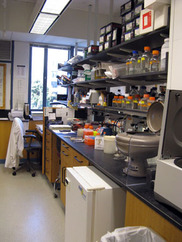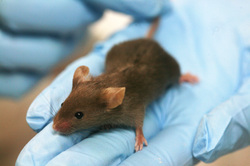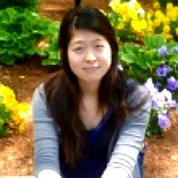 Image:cboperations.med.harvard.edu. The best thing about research is that each day is your own, each slightly different, full of potential and possibility. I have a monthly calendar, just sheets of paper I printed out from the Internet, and it gives me great pleasure to plan ahead, projecting new experiments and reanalyzing my main goals and the many steps needed to reach them. These tentative plans change with the accumulation of new data, and that, too, is exciting. This summer, I am pursuing full-time research in the Wagers Lab. It hasn't been easy, but it has been such an exciting journey thus far. I'd love to share with you an example of a day in my life, the life of a premed doing her thesis research in a stem cell laboratory. Enjoy! This past Tuesday... I groan when I hear my alarm clock turn on, the yellow numbers shifting slightly as I blink awake: 7:30AM. The fan is humming beside me, and though Winthrop House (a dorm at Harvard) has no A/C, the feel of the moving wind and the coolness of the early morning is pleasant. It is a struggle to get out of bed. I stumble out anyways, change, brush my teeth, and by 7:55AM, I am rushing out the door. Today, Julie and I will be isolating skeletal muscle precursors (SMPs) or muscle stem cells, from genetically modified, fluorescent (GFP) mice. Yes, fluorescent mice. Under a UV light, these rodents actually glow slightly green, and when cut open, every muscle is the color of an artificial lemon-lime candy. From these fluorescent mice, Julie and I will extract the SMPs. These cells lie on the surface of muscle, having yet to assume a differentiated identity (hence the name, skeletal muscle precursors). When muscle is injured, SMPs are recruited to the site of injury and there, differentiate into myofibers which later engraft (or attach/implant) into the muscle, thus repairing the damage. Our experiment involves using these SMPs to determine their engraftment potential in different mice. Is there a difference between engraftment success in young compared to old mice? How about mutant mice which have a specific gene “knocked out,” such that it is no longer expressed in the animal? Julie and I begin the procedure with six GFP wildtype mice, hoping to extract as many SMPs as possible. After seven hours of procedure and two or three hours of FACS sorting, we are left with a small Eppendorf tube of precious clear liquid, in which floats 60,000 SMPs. We bring this, along with several needles connected to thin tubing, down to the mouse facility, located in the basement of the Biolabs.  Image from es.wikipedia.org The first time I entered the mouse facility (affectionately called the “mouse house”), I felt like I was entering a space shuttle. With a swift swipe of an ID through a detector, the double doors to the facility open automatically. There is a corridor, lit dimly on both sides and ahead is a pointillist painting of several large blue mice. Above, a crackling noise is heard, the sound of many gumballs rolling down a tube. I found out later that the sound comes from the dirty bedding of many, many mouse cages being transported away in large metal tunnels in the ceiling. Down two flights of stairs, another ID swipe, and it's time to put on "space gear." An entire papery, white-cloth bodysuit is required, outfitted with a collar and a front zipper. A blue hairnet over the head, a white face mask covering everything below the eyes, blue shoe covers, and latex-free gloves complete the outfit. Once the spacesuit is on, one enters an air shower, a room in which dozens of ports shoot air for a few seconds at every angle. Only then is entry into the mouse house allowed. A final ID swipe leads Julie and me into the Port (a set of rooms) that the Wagers Lab uses. We set up in the surgery room, under the hood. All the mice are injected after being knocked out with isofluorane, a novacaine medication, so they feel nothing as the needle, filled with thousands of glowing SMPs, is slid into their tibialis anterior, a muscle below their kneecap. The muscle was injured the day before to allow ample space for the fluorescent SMPs to engraft. The process takes only a few minutes per mouse. Before long, Julie and I have injected all six mice, three wildtype mice and three transgenic mice which have the IL-6 gene, an inflammation factor, knocked out in every cell in their body. A full day's work, SMP isolation leaves us exhausted, and so it is rare to do the procedure more than two times a week. After lab, I grab dinner in Dudley Dining Hall (thank you, PRISE, for prepared meals during the week!). I then return to my room, where I hang out with my roommate, read a book (I’m currently going through “The Immortal Life of Henrietta Lacks” by Rebecca Skloot), and work on my medical school applications, before going to sleep. Enjoy the original version of this post on the Scientista Foundation's Summer Internship Series Blog! You can find my and other Scientistas' exciting research stories here.
4 Comments
2/13/2013 04:28:18 pm
There are so many different prospects when it comes to this subject. Thanks for sharing your knowledge on this particular aspect and making it easier for us.
Reply
3/22/2013 02:33:04 am
They have pretty interesting lives. I would like to be a stem cell scientists, I think I'd be a good one too and I wouldn't get bored.
Reply
Leave a Reply. |
What's HotGet the DigestAbout the Blogger
Stephanie M. Wang is a Chemical and Physical Biology major at Harvard College, Class of 2013. She is a pre-med who just can't get enough of the hard sciences. She loves learning new things, frisbee, poetry, every kind of apple, people. Stephanie blogs regularly for the Scientista Foundation: Find her blog here!
More From Stephanie |
The Scientista Foundation, Inc. All Rights Reserved © 2011-2021 | Based in NY | [email protected]
The Network for Pre-Professional Women in Science and Engineering
The Scientista Foundation is a registered 501(c)(3) -- Donate!
The Network for Pre-Professional Women in Science and Engineering
The Scientista Foundation is a registered 501(c)(3) -- Donate!







 RSS Feed
RSS Feed